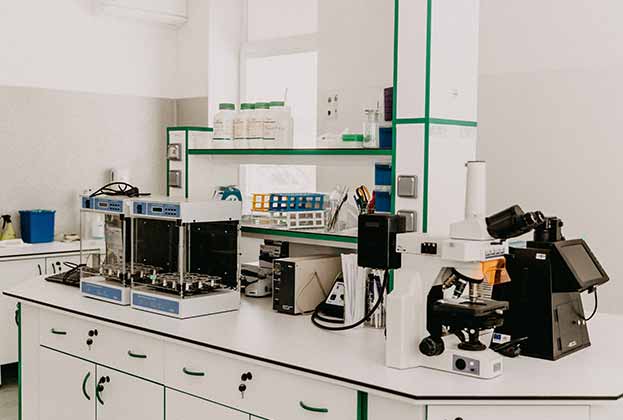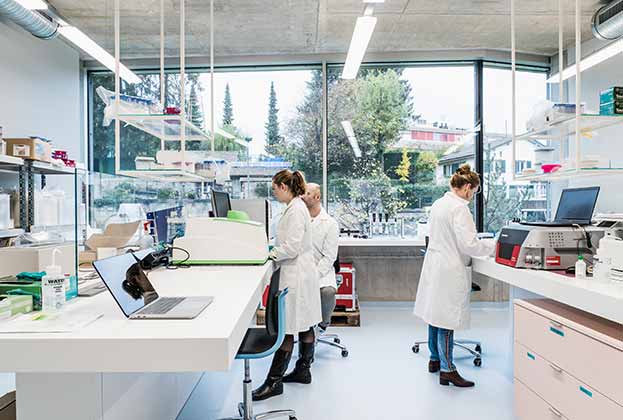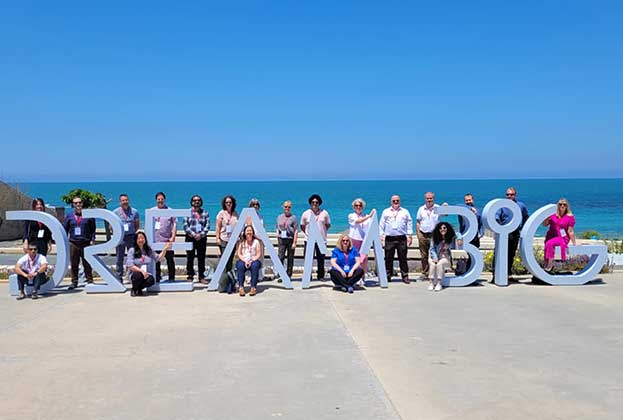Unlocking the potential
Unlocking the potential of the European life science sector has been the target of a span of credible investors over recent years. In order to do this, it is paramount to follow the science. Building a resilient investment strategy across Europe requires you to look beyond core markets to find opportunities.
Innovation is not constrained to particular locations, and centres of excellence are strengthening across Europe
Sarah Thorley, Associate Director, Savills
The science sector is an interconnected ecosystem of public-private partnerships and collaborations, and a resilient location for science real estate provides the space to allow these activities to excel and interlink. Innovation is not constrained to particular locations, and centres of excellence are strengthening across Europe. This is presenting opportunities for real estate investors across the continent.
Looking outside the UK, we have observed heightened investor appetite for life science assets in core clusters across continental Europe, particularly within France, the Netherlands, Germany, Switzerland and increasingly the Nordics, Spain, Belgium, and Italy. Much like in the UK, where activities are centred around the golden triangle of Cambridge, Oxford, and London, in Europe, we are seeing similar clustering patterns emerge, creating centres of excellence and internationally connected ecosystems.
Established internationally linked ecosystems
France is one of the key locations seeing a significant increase in the number of life science companies, as well as growth in VC funding. Home to three highly ranked hospitals and four world-renowned universities, Paris has become the most notable cluster within France. New entrants are rapidly accelerating the growth of the science market here, by developing purpose-built facilities designed to nurture the science ecosystem. Real estate investors have made their first entry into the sector in Paris in the past year, including Oxford Properties, which partnered with Novaxia to acquire Biocitech in north-east Paris, and Kadans, which is speculatively developing a life science building in Villejuif and Paris-Saclay. In parallel, we are seeing increased interest from investors looking at retrofitting business parks in key locations throughout France.
The Netherlands has also seen examples of life science real estate development in the past year, focused within the core regional cluster of Amsterdam, Rotterdam, and Leiden. With a concentration of leading hospitals and universities, the Netherlands benefits from being home to many centres of excellence within the science sector. Leiden Bio Science Park, for example, has been the focus of many investors and occupiers and has seen positive rental growth this year. The real estate offer is also evolving; for instance, CBRE IM has committed to forward fund Batavia Biosciences’s new GMP facility. However, there is huge regional strength in the Netherlands too, with key science parks and academic anchors across the country. One such example is Wageningen University & Research, which is ranked 5th in Europe, and 20th globally¹, for life science studies and is considered to be the world’s most sustainable university.²
Germany leads as the top market for investment into R&D by pharma companies³ and is home to global leaders, including Bayer, Boehringer Ingelheim, and Merck KGaA
Sarah Thorley, Associate Director, Savills
Germany leads as the top market for investment into R&D by pharma companies³ and is home to global leaders, including Bayer, Boehringer Ingelheim, and Merck KGaA. Within the country, science and innovation activities are geographically dispersed. With 19 universities ranked in the top 200 universities globally¹ for providing life science education, and 14 world-leading hospitals⁴, Germany benefits from a pool of top talent and clinicians which has allowed centres of excellence to form across the country. Indeed, the Global Innovation Index recognises that Europe’s largest economy has ten globally renowned science and technology clusters.⁵
Activity in Germany is closely linked into neighbouring markets through internationally connected ecosystems. The Rhine-Ruhr region of Germany and northern France link into the international cluster, BioValley, which joins those markets with Switzerland through the Basel region. Basel continues to be a leading cluster within Switzerland, whilst Zurich is home to many life science companies headquarter functions. Switzerland ranked first globally in the Global Innovation Index in 2022, excelling across providing infrastructure, human capital, knowledge and technology outputs, and the occupational market is typically served by university-linked science parks. The success of their innovation market is underpinned by world-renowned education provided by the likes of ETH Zurich, which is ranked 3rd in Europe, and 13th globally,¹ for life science education.
In a similar fashion, key markets in the Nordics are connected through the Medicon Valley, which joins Copenhagen through to Stockholm. Much of the activity in Denmark is based in Copenhagen and continues to be centred around the world-renowned Technical University of Denmark, whilst in Sweden, occupiers primarily look to Stockholm and southern Sweden. Again, Sweden also performs highly in the Global Innovation Index, ranking 3rd globally in 2022, underpinned by strengths in labour and knowledge sharing.
Emerging centres of excellence
Whilst Belgium remains a smaller market for science real estate, the ecosystem is strengthening, underpinned by the academic environment and ability to translate this into innovation activities. KU Leuven in Belgium is ranked 18th in Europe for life science education and has a large student population.¹ KU Leuven Research & Development (LRD), the technology transfer office of KU Leuven, was established in 1972 as one of the first of its kind in Europe, and it has a long-standing history of collaborating with industry, patenting, licensing and creating spin-off companies to drive innovation across Belgium and beyond. Belgium is seen to be punching far above its weight in terms of IP and patents, and the knowledge base is clear, and its strategic location in northern Europe could see the area become a key manufacturing and distribution location.
Similarly, Spain has the potential for significant growth in the science real estate market. Barcelona has a strong cluster of life science occupiers, underpinned by two world-leading hospitals and two top universities. Madrid is home to four world-leading hospitals, including La Paz University Hospital, which is renowned for being one of the largest hospitals in Spain, and for the Hospital La Paz Institute for Health Research (IdiPAZ), which fosters collaboration between researchers to promote translational biomedical research and innovation.³ The life science real estate market in Madrid is evolving, and the Madrid Science and Innovation District (MaSID) is ahead of the curve in providing functional real estate for science and technology companies to grow and scale.
In addition, the Italian life science market is growing, underpinned by strong development activity within Milan. Milan Innovation District (MIND), a 100-hectare mixed-use redevelopment, is currently being developed by Lendlease, with the aim of becoming a world-leading science, knowledge and technology hub. MIND is already home to several key anchors, including the new headquarters of the IRCCS Galeazzi hospital; Human Technopole, Italy's new research institute for life sciences; and the Science Campus of the University of Milan. The strength of these anchors is driving tenant engagement with AstraZeneca, Illumina and Bio4Dreams taking space.
Finally, Ireland is an interesting growth market. Whilst activity has been geographically dispersed, there is naturally a concentration around Dublin, which is home to the world-renowned university, Trinity College, ranking 41st in Europe for life science education. Ireland has developed particular strengths within medical technology, driving demand for high-tech manufacturing space.
Sources:
1 Times Higher Education Guide 2023, published 2022
2 UI GreenMetric World University Ranking (out of 956 universities)
3 EFPIA, 2020
4 Statista, 2022
5 Global Innovation Index, 2022 .
Read the articles within Spotlight: Life Sciences – Trends & Outlook below.
.jpg)





